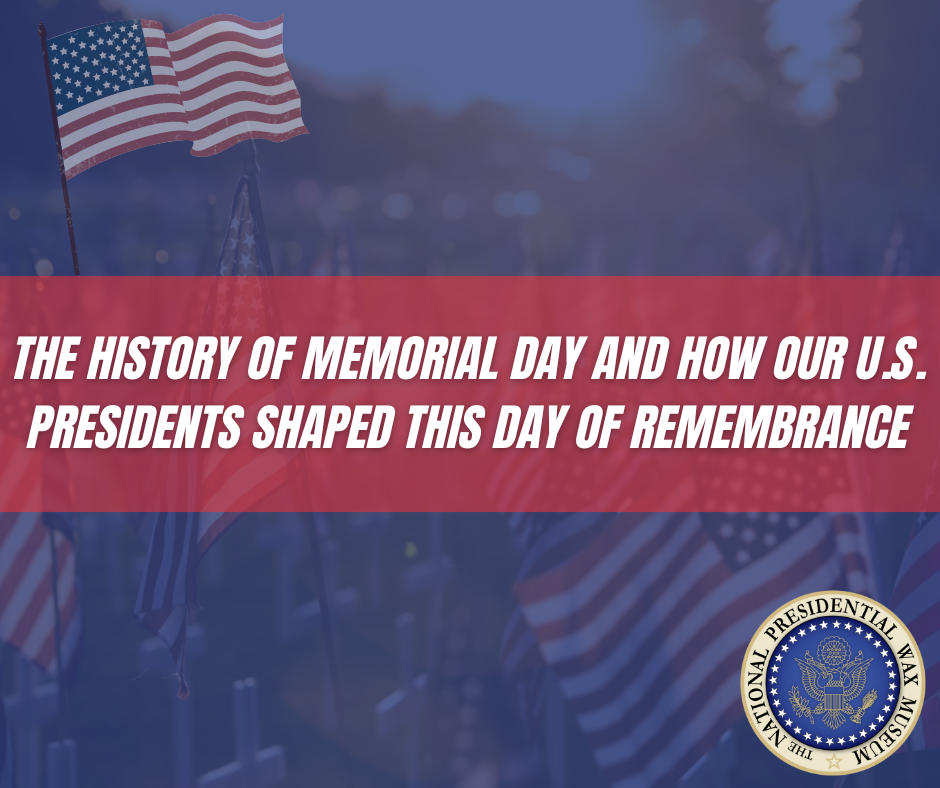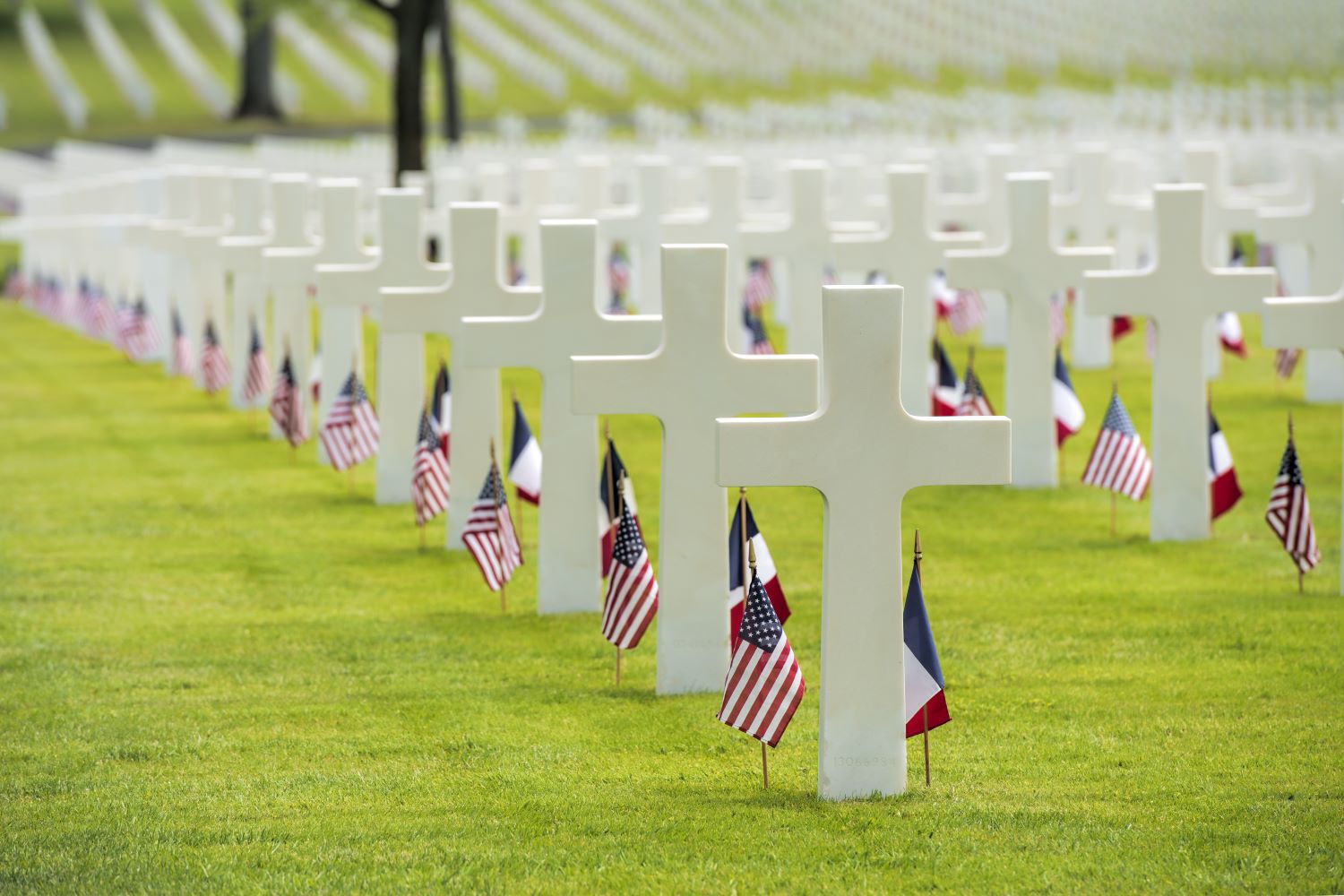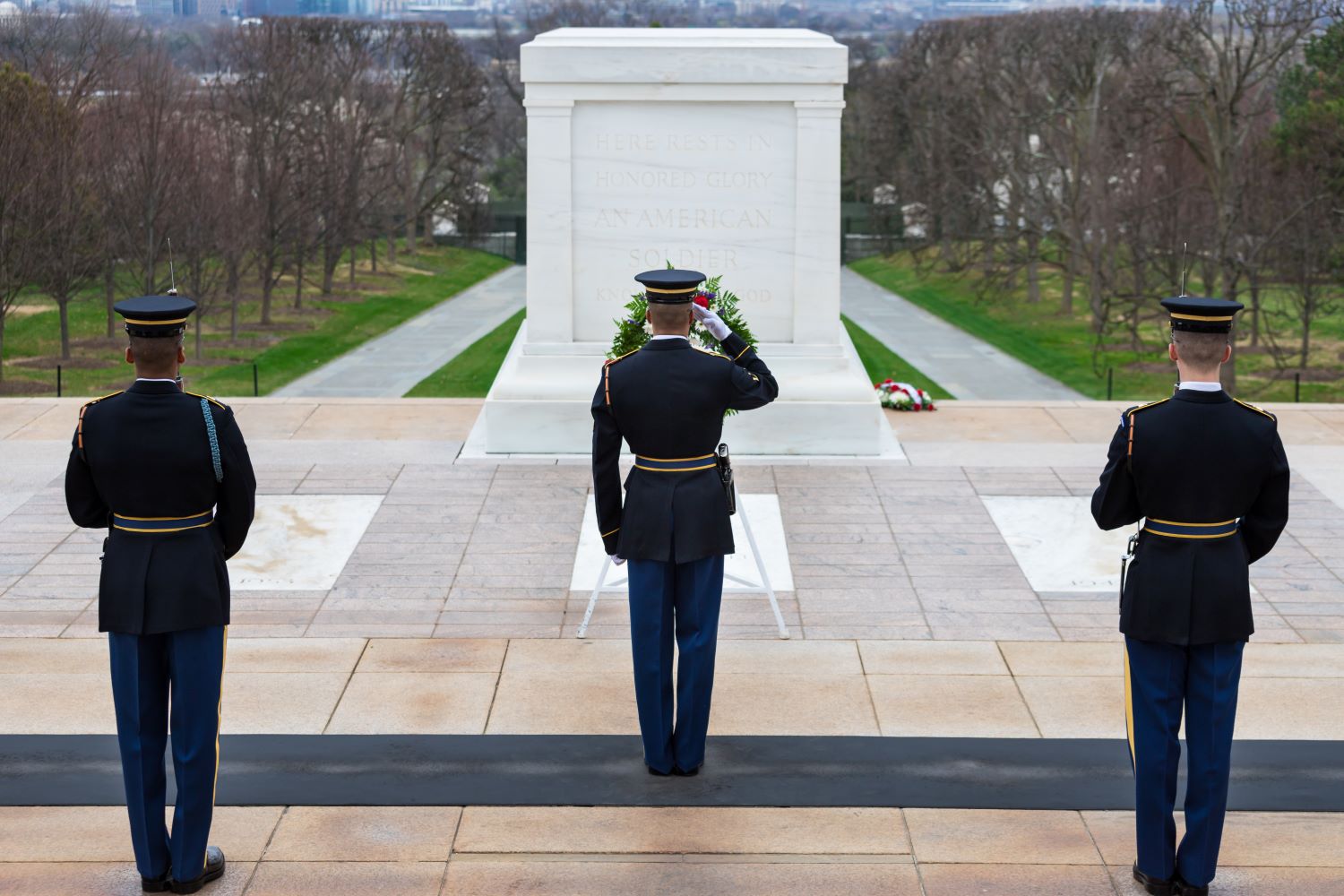The History of Memorial Day and How Our U.S. Presidents Shaped this Day of Remembrance
– By #The National Presidential Wax Museum

Memorial Day is known as an annual day of remembrance and honor for U.S. military personnel who lost their lives while defending their country. Originally called Decoration Day, this solemn holiday occurs every year on the last Monday of May. From its origins in the aftermath of the Civil War to its evolution as a national event honoring fallen American personnel, Memorial Day embodies a tapestry of historical significance. Join The National Presidential Wax Museum as we delve into Memorial Day’s history and the profound impact U.S. presidents have had in shaping this day of national remembrance.
A History of Honor
“Let us strive on to finish the work we are in; to bind up the nation’s wounds; to care for him who shall have borne the battle, and for his widow, and his orphan.”
- Abraham Lincoln, second inaugural address

Memorial Day was established over 150 years ago following the brutal effects of the American Civil War which claimed over 620,000 fatalities. Memorial Day was originally called Decoration Day, deriving from the early tradition of decorating graves with wreaths, flowers, and flags. It was first widely commemorated on May 30th, 1868, following the sacrifices of Civil War soldiers – spearheaded by General John A. Logan of the Grand Army of the Republic which was an organization of former Union sailors and soldiers.

During its first commemoration, former Union General and future U.S. President, James A. Garfield held a speech at Arlington National Cemetery. This event hosted 5,000 participants who helped decorate the graves of over 20,000 Union and Confederate soldiers.
New York was the first state to officially recognize Decoration Day followed by all the other Union states by 1890.
Memorial Day (Decoration Day) gradually became widely accepted across the U.S. as the country found itself embroiled in national conflicts including World War I, World II, The Korean War, and the wars in Iraq and Afghanistan.

Image Credit: Lyndon Johnson Presidential Library
The name “Memorial Day” was first introduced in 1882 and gradually became more popular than “Decoration Day” after World War II. Memorial Day was declared the official name by federal law in 1967.
For decades, Memorial Day was observed on the original date General Logan had selected, May 30th, until Congress passed the Uniform Monday Holiday Act in 1968 which designated Memorial Day as the last Monday in May. By 1971, this change was nationally recognized.
Memorial Day Today

Memorial Day continues to foster a sense of community collectively saluting the brave men and women who have sacrificed their lives for the U.S. to this day. Many cities and towns commemorate this holiday with parades, lining their streets with red, white, and blue. Each year, Memorial Day is commemorated at Arlington National Cemetery where a small American flag is placed on each grave. Traditionally, the President or Vice President lays a wreath at the Tomb of the Unknown Soldier.
As we gather each year to remember and honor those who have given their lives for our country, we are reminded of the unity and resilience of the American spirit.
Last Modified:
